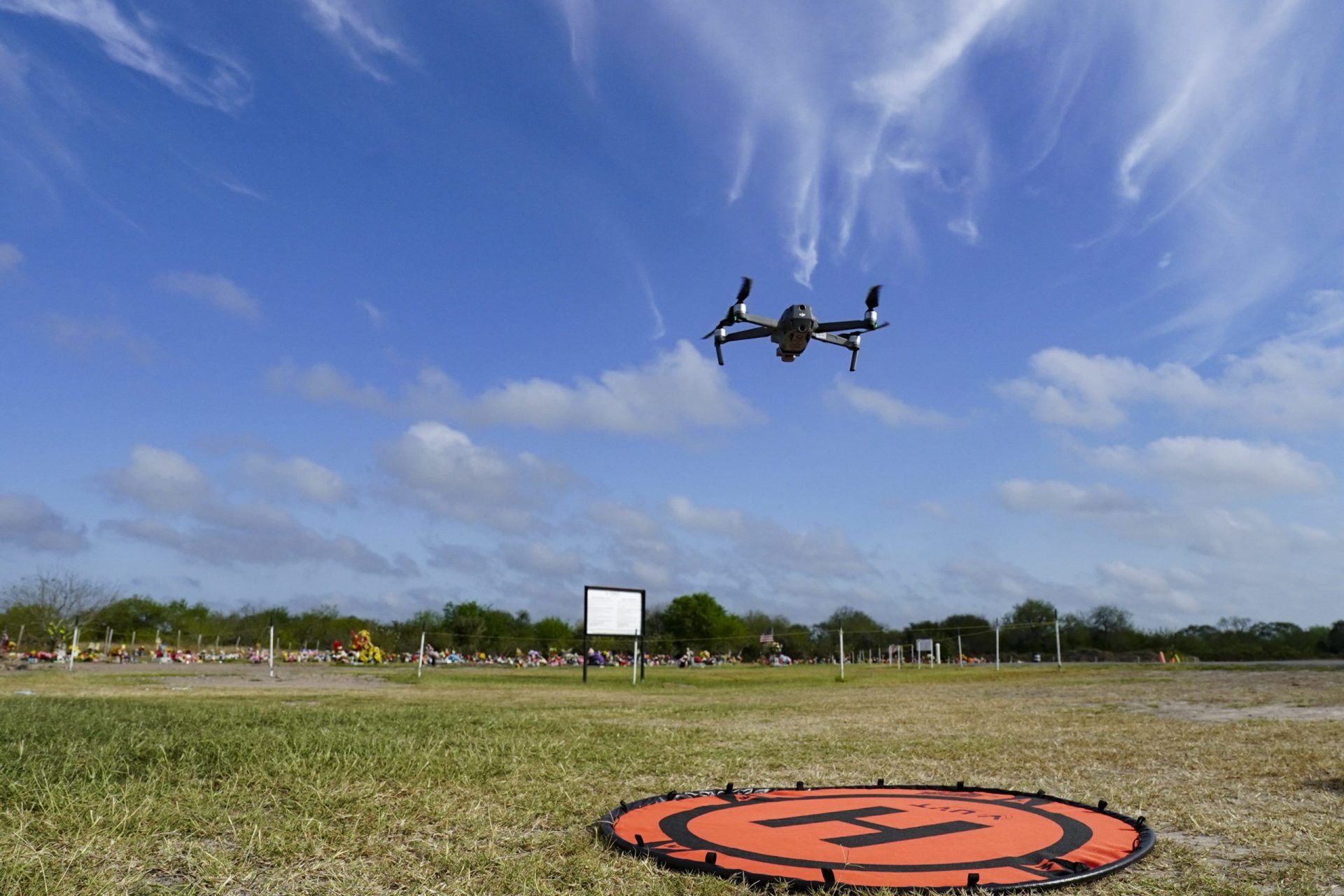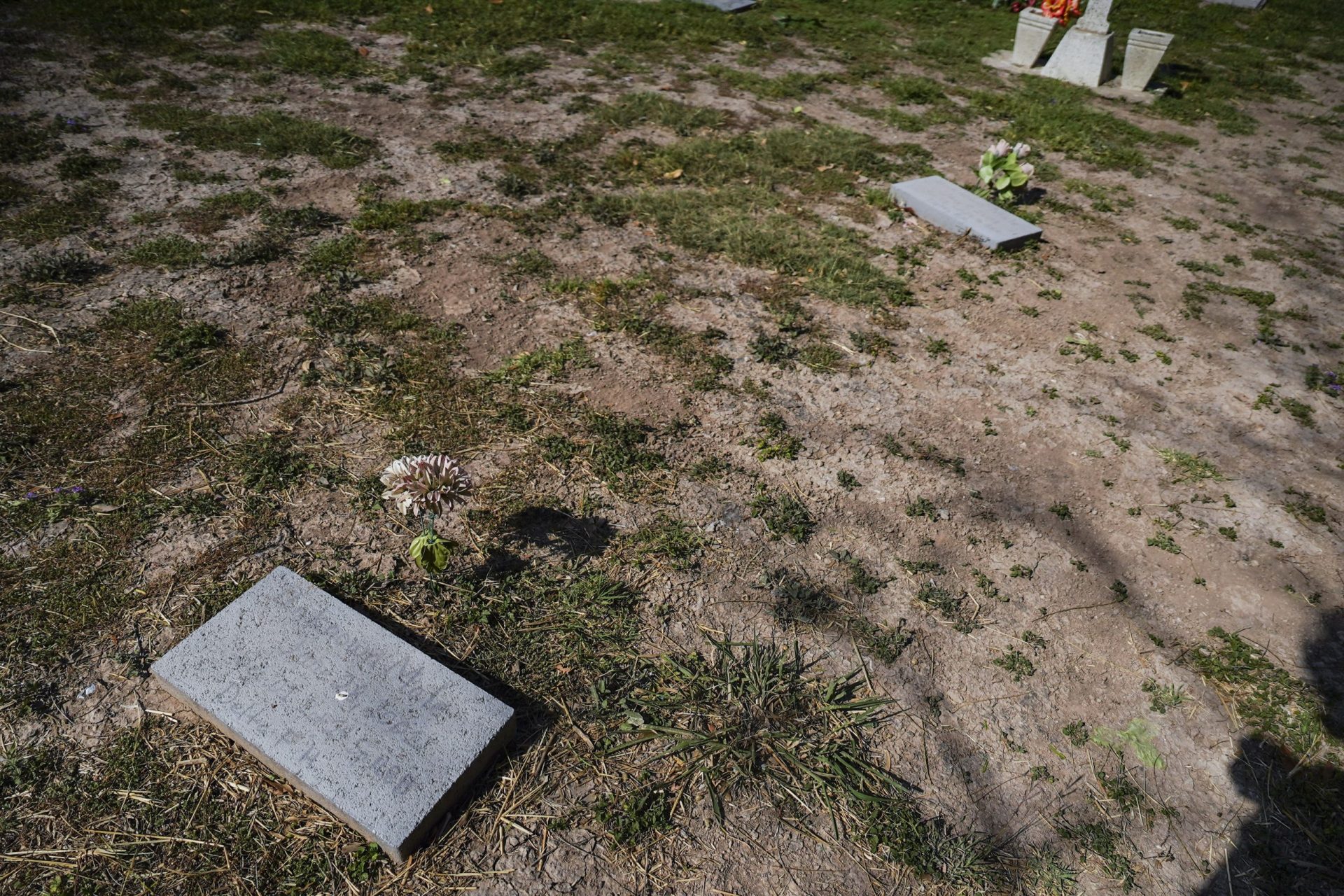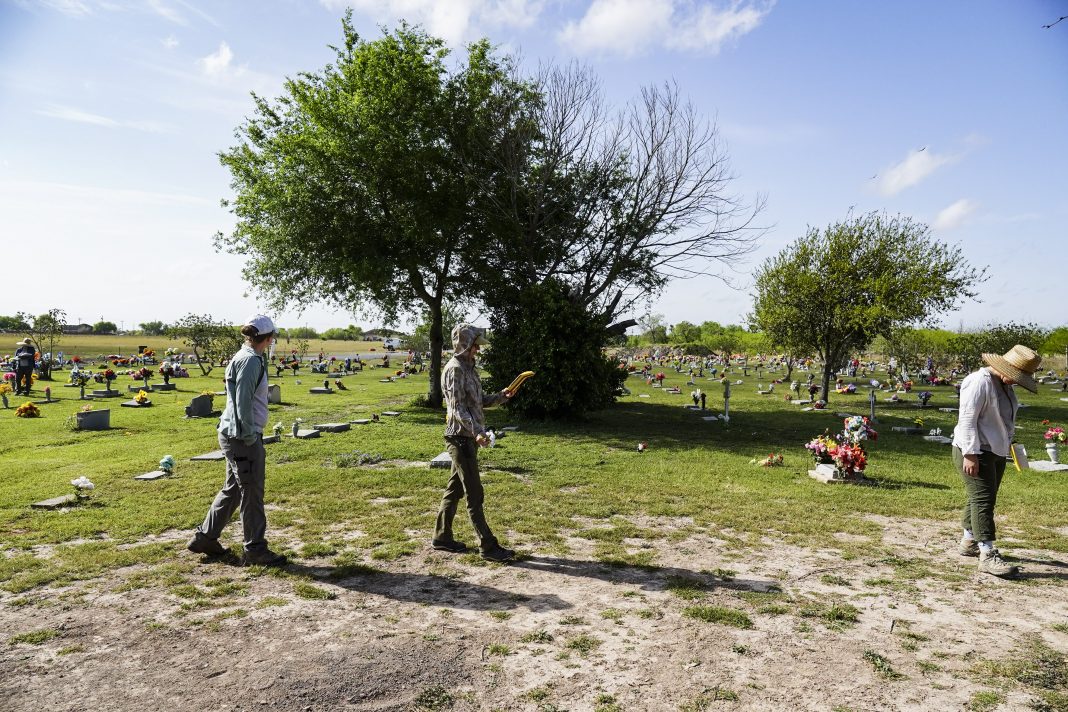The sun was already high overhead at 9 a.m. on Friday as forensic anthropologist Dr. Kate Spradley and her team set up for the day’s work in Guillen Community Cemetery.
The director of Operation Identification at Texas State University-San Marcos, Spradley’s project works with the government and non-governmental bodies to help identify and return to their families the bodies of those that have lost their lives trying to cross the U.S.- Mexico border.
OpID is one of several organizations that work together as part of the Forensic Border Coalition to help understand and aid those caught in the humanitarian crisis at the U.S.-Mexico border. The coalition consists of the Argentine Forensic Anthropology Team (Equipo Argentino de Antropología Forense, EAAF), The Colibrí Center for Human Rights, Houston Migrant Rights Collective, South Texas Human Rights Center, the Department of Geography at Texas State University, the University of Houston Clear Lake Anthropology Program and crucial partnerships with organizations located in the Americas.

Since 2013 the coalition has been working to address the myriad barriers to identifying the remains of missing migrants found on the U.S.- Mexico Border. In addition to providing identification, the coalition seeks to support the families still searching for their loved ones and help improve issues surrounding the investigation and identification of these cases.
As Spradley tries to do at least once a year, the visit to the Guillen Community Cemetery was to conduct a survey to determine where likely unidentified migrants are buried prior to any exhumations when she and her team return in May as part of the coalition’s work. Once the exhumations happen, the project can take DNA samples and hopefully identify and repatriate the deceased back to their families.
Throughout 2015 and 2016, Spradley and the Forensic Border Coalition worked in Brooks County investigating the surge of migrant deaths there—where at the time, the buried unidentified did not have a DNA sample on record, making it very difficult to establish an identity for the deceased.
Their experience in Brooks County led to surveying other counties to see what happens to the unidentified and where they are buried.
After Senate Bill 1485 passed, Spradley and the coalition could obtain death records of unidentified persons one year after their death versus the previous waiting period of 25 years. Looking through the records drew them to Guillen Community Cemetery, where over 10 unidentified individuals, some recorded as being interred as far back as 1997, may have been migrants.
At the cemetery April 1 was geophysical expert Dr. Nicholas P. Herrmann, OpID lab manager Chloe McDaneld, Ph.D. students Molly Kaplan, Mariah Moe, Courtney Siegert, masters student Heather Nesbitt, undergraduate students Veronica Flores-Guillen and Ariana Escalona and Deputy Don White of the Brooks County Sheriff’s Department.
Over two days, the team worked to make as accurate a survey as possible of the cemetery to identify the exact locations of the individuals they are looking for at the site.
“The first thing that we do in any cemetery where we are going to do an exhumation, even for cemeteries that have records, is come here with geophysical equipment,” Spradley said.

Using ground-penetrating radar, drone images and infrared photos the team can narrow down where those burials are, as burials like this can be unmarked, or time may have shifted the cemetery’s layout from the records available.
“So we use these non-destructive techniques to help guide our exhumations, to really bring it into more focus. So this way, we do not have to dig up large areas of the cemetery because we are cognizant that community members are buried here. We want to be the least intrusive possible,” Spradley said.
Ph.D. student Mariah Moe operated the team’s drone, making low altitude passes over the cemetery to collect color images to create a baseline map. With this baseline, Moe plans to use predictive modeling to see where unidentified individuals are likely to be in a cemetery based on their maps of the burials of known individuals.
Moe is currently working on her dissertation, focusing on improving the methods for grave detection, specifically of unmarked graves in modern cemeteries.
The team plans to come back in May for the exhumations, using the information gathered over the survey.
For Maria G. Guillen, who manages her family’s cemetery, the knowledge that in May the individuals will be leaving her family’s care is a bittersweet one. Over the years, they’ve made sure to consecrate the graves and hold services for the unnamed, so it seems sad to her to remove them, but the hope that this could give a family is a strong counterpoint in her mind.
“At the same time, I hope the loved ones looking for their family members do get matched up using this DNA— then there can be closure. I am sad to think they go through life just wondering where their loved one is,” Guillen said.
RELATED READING:
Death of a Dream: Hundreds of migrants have died crossing into Valley





